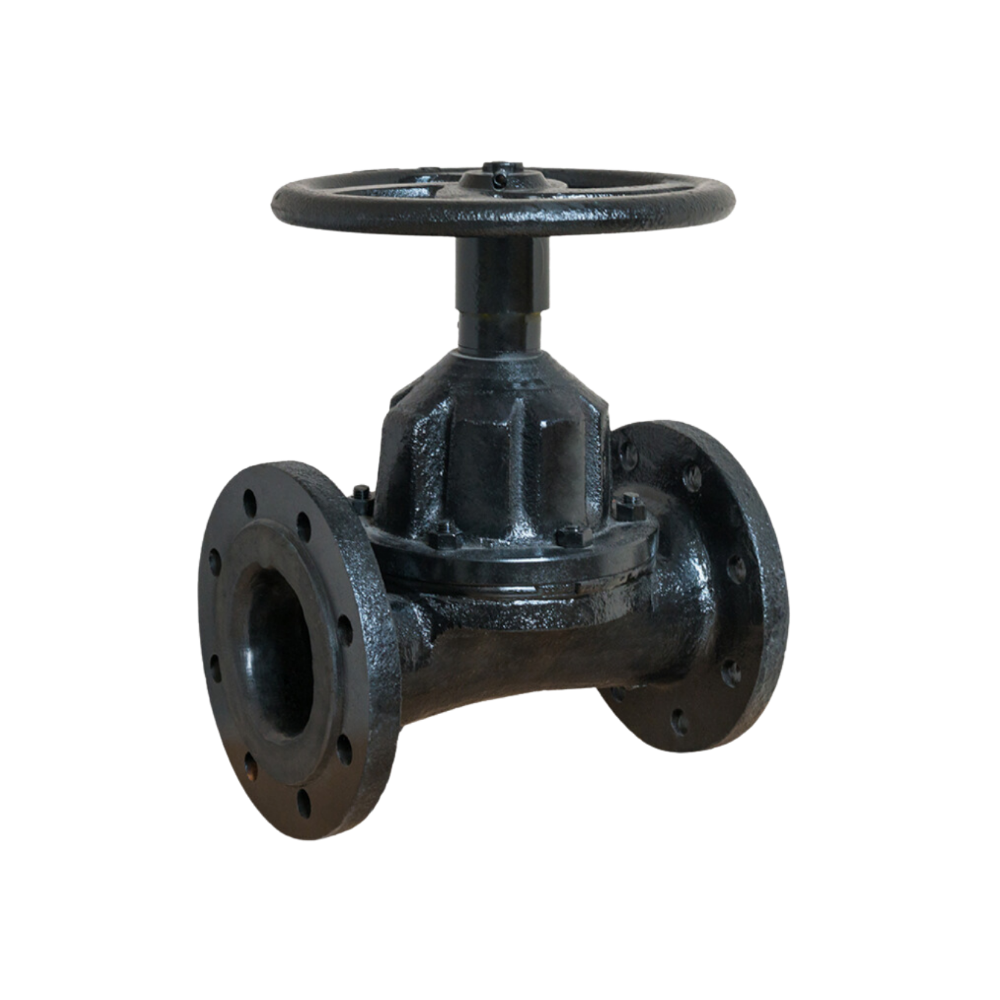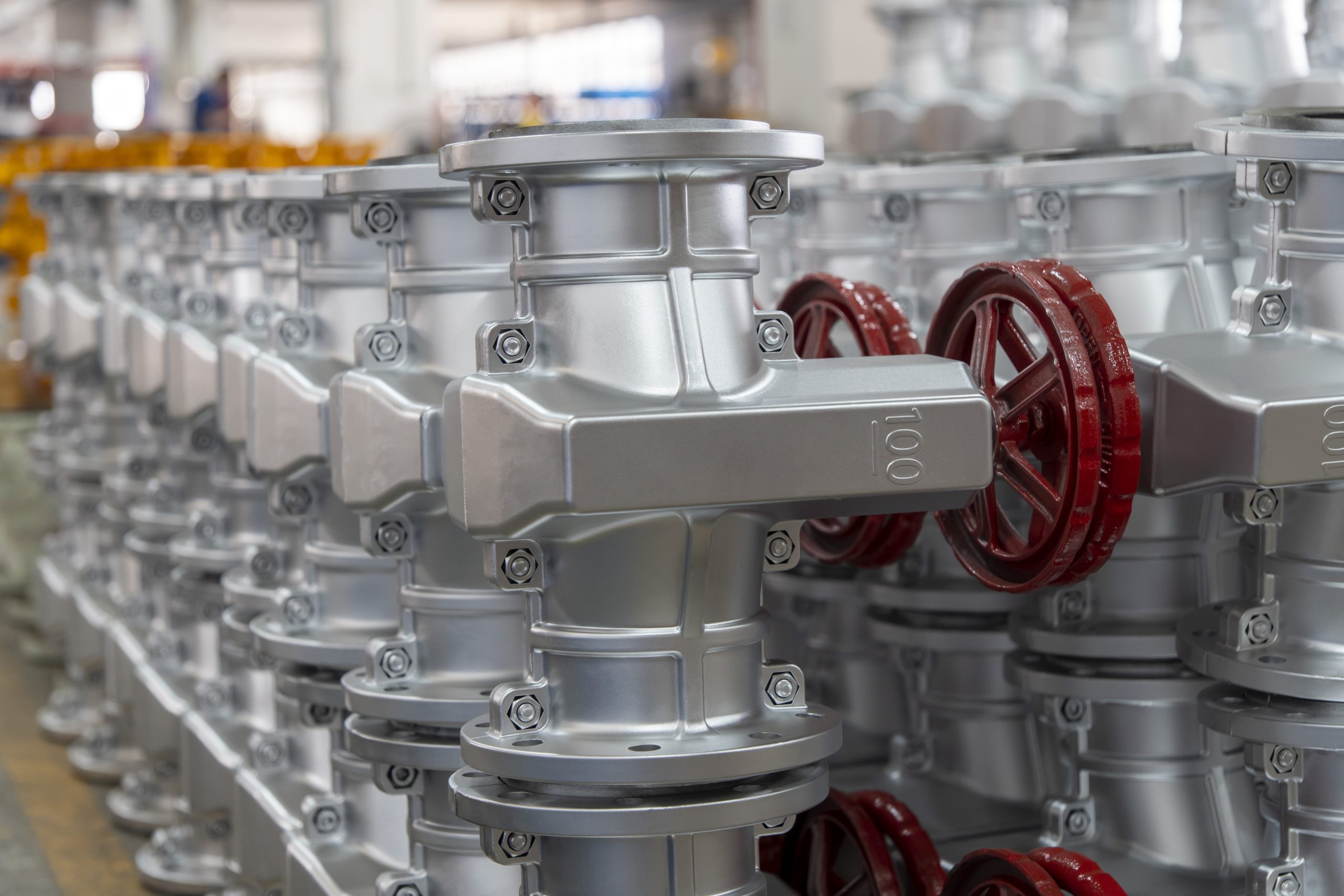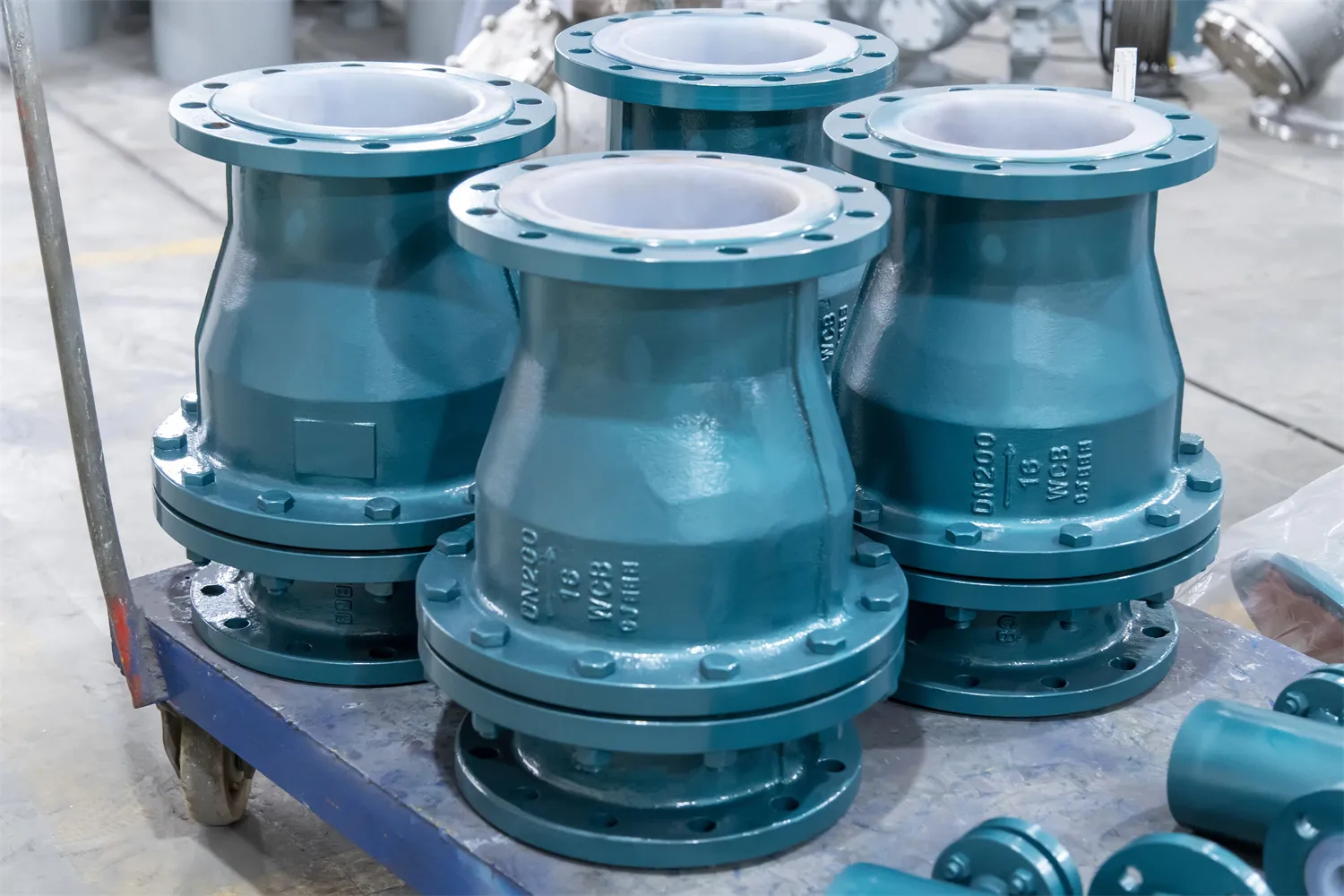

A diaphragm valve and a pinch valve are both used to control the flow of liquids, but they work in different ways.
Diaphragm valves have a soft piece (like a rubber sheet) that gets pressed down to block the flow of liquid, kind of like pressing your hand over the end of a straw to stop water from coming out.
A pinch valve, on the other hand, squeezes a soft tube to stop the flow, just like pinching a hose to stop water.
The pinch valve is great for liquids that might be rough or harmful because the liquid stays inside the tube, and nothing else touches it.
To learn more about these valves, continue reading below.


| Feature | Pinch Valve | Diaphragm Valve |
| Flow Control | Restricts flow by pinching a flexible tube or sleeve | Controls flow using a flexible diaphragm pressed against a valve seat |
| Actuation Options | Manual, pneumatic, or electric (pneumatic pinch valve, manual pinch valve) | Manual, pneumatic, or electric (pneumatic diaphragm valve) |
| Suitability for Slurry/Corrosive Fluids | Excellent, due to no direct contact with moving parts | Good, especially when lined or made from corrosion-resistant materials |
| Pressure Handling | Generally suited for low to moderate-pressure | Capable of handling moderate to high pressures |
| Maintenance | Minimal, easy to replace the flexible tube | Requires more frequent maintenance due to diaphragm wear |
| Lifespan | Long, as only the sleeve is subject to wear | Limited by diaphragm fatigue |
| Valve Type | Pros | Cons |
| Pinch Valve | Ideal for handling abrasive or corrosive fluids, minimal maintenance, simple design | Limited to low-to-medium pressure applications, not suitable for high-pressure |
| Diaphragm Valve | Provides tight shutoff; excellent for handling hazardous or sterile fluids; no stem leakage | Diaphragm wear requires more frequent replacement, limited temperature resistance |
A pinch valve is a full-bore or fully ported type of control valve that uses a pinching effect to obstruct the flow of fluids.
They are simple yet highly effective, especially in applications involving slurries, powders, and abrasive materials.
The primary purpose of a pinch valve is to control the flow of materials in various industrial settings, particularly where the media can be abrasive or corrosive.
The flexible rubber sleeve ensures the valve’s body is protected, making it ideal for harsh conditions.
The working principle of a pinch valve is straightforward: a flexible tube or sleeve is pinched closed to restrict or stop the flow of fluid.
When the valve is activated (manually, pneumatically, or electrically), a mechanism compresses the sleeve, blocking the flow. Releasing the pinch allows the flow to resume.
Operated manually by turning a handwheel to control the pinch and the flow through the valve.
Controlled by air pressure, where the sleeve is pinched by pneumatic force, often used for automated processes.
Uses an electric actuator to control the sleeve’s movement, ideal for applications requiring precise flow control.
A diaphragm valve is a type of valve that uses a flexible diaphragm to regulate the flow of fluid through the system.
It is particularly effective for isolating and controlling corrosive, viscous, or particulate-laden fluids in both manual and automated systems.
The purpose of a diaphragm valve is to provide tight shutoff and precise control over fluid flow, especially in applications where cleanliness, sterility, or corrosion resistance is essential.
This makes them ideal for industries like pharmaceuticals, food processing, and chemical handling.
The working principle of a diaphragm valve involves moving a diaphragm (a flexible, pressure-responsive membrane) against a valve seat to close or open the valve.
When the diaphragm presses down, it blocks the flow. Lifting it away from the seat allows the fluid to pass through.
Uses air pressure to move the diaphragm, providing quick, automated control over fluid flow.
Controlled manually by a handwheel, often used in smaller-scale or low-pressure applications.
Both pinch valves and diaphragm valves offer non-contaminating flow control, making them suitable for handling corrosive or abrasive materials without exposing the valve body to damage.
The two main types of diaphragm valves are weir-type and straight-through types. The weir-type is designed for better control and throttling, while the straight-through type offers full bore flow and less pressure drop.
A pinch valve controls flow by pinching a tube, ideal for slurries and granular materials, while a needle valve controls flow by moving a small, tapered needle in or out of a seat, offering fine flow adjustments.
To use a pinch valve, apply pressure to the flexible sleeve to pinch it closed and stop the flow. Releasing the pressure allows the sleeve to return to its open position and resume the flow.
A pinch valve uses a flexible tube to control flow by pinching it closed, while a globe valve uses a disc to restrict flow by moving it against a seat, typically used for precise throttling.
A diaphragm valve uses a flexible membrane to regulate flow, providing a tight seal without stem leakage, while a globe valve uses a disc that moves against a seat for flow control.
A diaphragm valve actively regulates flow using a flexible membrane, while a check valve is a passive device that prevents backflow by allowing flow in only one direction.
A ball valve uses a rotating ball with a hole to control flow, offering fast shutoff, while a diaphragm valve uses a flexible membrane to regulate flow, providing better control over hazardous or sterile fluids.
The main disadvantage of a diaphragm valve is the diaphragm’s limited lifespan, as it wears out over time and requires regular replacement, especially in high-cycle applications.
A diaphragm valve is identifiable by its flexible membrane and the stem that lifts or presses the diaphragm onto the seat to control fluid flow.
The pressure range of a diaphragm valve typically varies from low to medium pressures, with some designs capable of handling up to 200 psi.
No, a diaphragm valve is not inherently a pressure-reducing valve, but it can be part of a pressure-reducing system when combined with other components.
A diaphragm valve stops flow by pressing the flexible diaphragm against the valve seat, creating a seal that prevents fluid from passing through.
LIANKE, a leading valve manufacturer in China, specializes in producing high-quality pinch valves and diaphragm valves.
Their valves are known for durability, excellent performance in harsh environments, and versatility in handling corrosive, abrasive, or sterile fluids.
With a wide range of options, from manual pinch valves to pneumatic diaphragm valves, LIANKE offers solutions tailored to various industries like chemical processing, water treatment, and pharmaceuticals.
Contact us now!
Resources:
Pinch Valve Vs Diaphragm Valve – Which is best?

If you work with industrial valves, you’ve likely heard of ASME B16.34—a critical standard that ensures valves perform safely under extreme conditions. Whether you’re an engineer designing a pipeline or a mechanic maintaining a chemical plant, understanding this standard is key to avoiding costly failures. In this guide, we’ll break down what ASME B16.34 entails, why […]

Plastics and elastomers are essential materials in industries ranging from automotive manufacturing to medical devices. While both are polymers (long chains of repeating molecules), their properties and applications differ significantly. This guide breaks down their technical distinctions, backed by industry research and data, to help you make informed material choices. 1. Plastics and Elastomers: Core […]

Valve lubricants serve as critical operational components in industrial systems, preventing mechanical failures and maintaining functional integrity. Across sectors such as oil refining, water treatment, and chemical processing, valves regulate fluid and gas flow, with their operational reliability contingent on precise lubrication practices. This guide analyzes the technical necessity of valve lubricants, supported by empirical […]

In industrial systems, check valves are critical for preventing backflow, protecting equipment, and maintaining process efficiency. However, improper installation can lead to premature wear, leaks, or even system failure. For engineers, mechanics, and technicians, understanding the technical nuances of check valve installation is essential. This guide breaks down key considerations, supported by industry standards and […]



